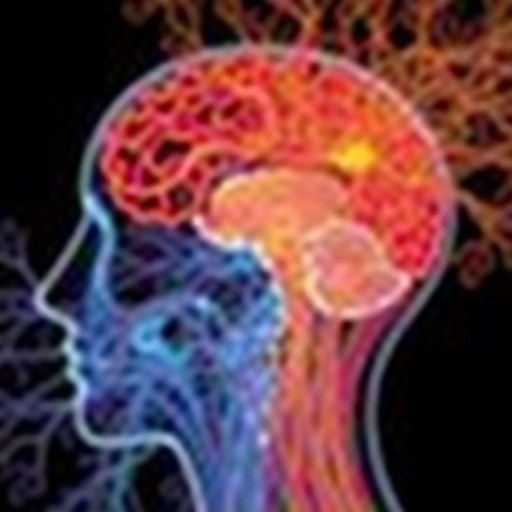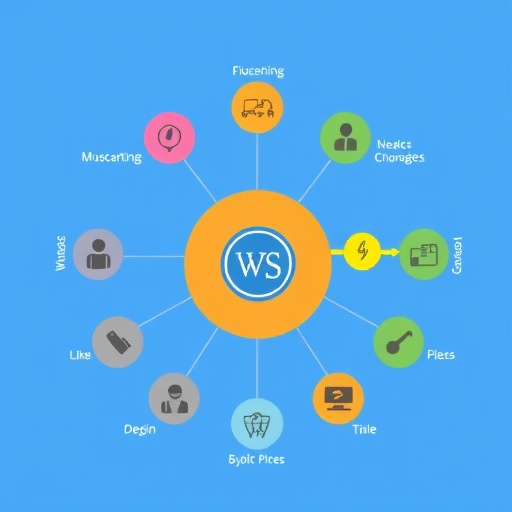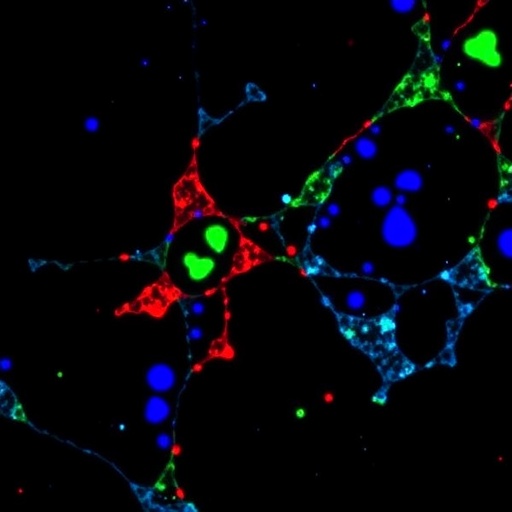
In an era where neuroscience relentlessly pushes the boundaries of understanding the brain, a compelling new framework has emerged that promises to profoundly reshape our grasp of neural dynamics and behavior. This framework, centered around the concept of neural manifolds, offers a mathematically grounded yet biologically meaningful way of visualizing the collective activity of neuronal populations. The brain, long recognized for its staggering complexity, reveals an underlying structure when its activity is projected into these neural manifolds — lower-dimensional spaces that encapsulate the essential dynamics governing behavior and cognition.
At its core, the neural manifold framework addresses a fundamental question that has perplexed neuroscientists for decades: How do large populations of neurons coordinate to produce remarkably flexible yet stable behaviors? Traditional approaches often struggled with high-dimensional data generated by neural recordings, where thousands, sometimes millions, of neurons are simultaneously active. Neural manifolds distill this complexity, revealing that despite the enormous number of neurons, their activity occupies only a limited subset of all possible states. This insight unlocks a conceptual leap, portraying brain activity not as a chaotic sprawl but as a structured, constrained flow navigating a geometry embedded in neural activity space.
Crucially, these manifolds reflect biological constraints imposed both internally and externally on neuronal populations. Intrinsic factors include the synaptic connectivity patterns, cellular properties, and circuit motifs that shape how neurons influence one another’s firing. Extrinsic factors intersect with the animal’s environment and behavioral repertoire, which force the neural population into specific low-dimensional activity subspaces tuned to particular tasks or interactions with the world. The manifold is, therefore, not just an abstract mathematical tool but a biologically intertwined essence of possible collective neural states operationalized during behavior.
.adsslot_LXeO1m2VDd{width:728px !important;height:90px !important;}
@media(max-width:1199px){ .adsslot_LXeO1m2VDd{width:468px !important;height:60px !important;}
}
@media(max-width:767px){ .adsslot_LXeO1m2VDd{width:320px !important;height:50px !important;}
}
ADVERTISEMENT
Recent advances in technologies enabling large-scale neural recordings from diverse brain regions and multiple species have catalyzed the rise of manifold-based interpretations. Cutting-edge electrophysiology and imaging methods now capture the concurrent activity of hundreds to thousands of neurons across multiple brain areas while animals engage in complex behaviors. Analysis reveals striking commonalities in how this activity is organized: the seemingly high-dimensional neural signals are constrained within smooth, continuous manifolds. Even during rich, naturalistic behaviors, the brain’s activity appears to trace paths along these intrinsic geometric structures rather than disperse randomly across the neural state space.
Understanding the implications of neural manifolds holds the promise of a unified description of brain function that bridges scales and levels of analysis. By focusing on the geometric and topological properties of these manifolds, neuroscientists can identify stable spatiotemporal patterns that correspond to fundamental neural computations. Behavioral states, decision-making processes, and motor commands all appear to ride on these geometrical constructs, revealing the brain’s intrinsic computational logic as it encodes and generates complex functions.
The manifold perspective also challenges conventional notions of neural coding. Rather than viewing each neuron as an isolated information channel, the neural manifold frames ensemble activity patterns as the primary information carrier. Information processing and coding emerge naturally as points or trajectories on the manifold’s landscape, emphasizing population-level interactions over single-cell activity. This shift reinvigorates efforts to understand the neural basis of cognition by highlighting the coordination patterns embedded in population dynamics.
Moreover, neural manifolds provide a robust framework for exploring neural plasticity and learning. As animals acquire new skills or adapt to changing environments, the shape and structure of their neural manifolds evolve. These alterations reflect the reconfiguration of population activity patterns necessary for behavioral flexibility. Investigating how manifold geometry changes over time offers a deep avenue for understanding how experiences and training reshape brain function, with potential translational impacts for neurorehabilitation and brain-machine interfaces.
Interfacing the neural manifold viewpoint with theoretical neuroscience further enriches its explanatory power. Mathematical tools from dynamical systems theory, differential geometry, and machine learning coalesce to characterize the manifolds’ properties, such as curvature, dimensionality, and stability. These quantitative insights elucidate not only how neural populations behave but also why certain patterns are favored over others due to underlying biological constraints and computational objectives, such as minimizing energy or maximizing representational efficiency.
However, despite its elegance and promise, several conceptual and practical challenges remain in fully integrating neural manifolds into mainstream neuroscience. One pressing gap concerns the causal link between manifold geometry and specific behavioral outcomes. While correlations between manifold trajectories and actions are robust, experimentally manipulating the manifold structure to observe direct behavioral consequences remains a formidable challenge. Bridging this gap is essential to move from descriptive to mechanistic accounts of brain function.
Additionally, neural manifolds are inherently dynamic, sensitive to internal states such as attention, arousal, and motivation. Untangling how endogenous fluctuations modulate the manifold’s shape and position, and consequently behavior, represents an exciting frontier. There is also the unresolved question of how these manifolds across different brain regions interrelate and couple to produce coordinated behavior at the organismal level. Developing integrative frameworks that connect manifold geometries across distributed neural circuits could lead to a holistic understanding of brain-wide computation.
Remarkably, neural manifold theory dovetails naturally with burgeoning fields such as artificial intelligence and robotics. Insights into how low-dimensional neural manifolds underlie efficient coding and flexible control illuminate principles that could inspire novel machine learning architectures and control algorithms. Conversely, tools from AI provide new ways to decipher manifold structures and to simulate complex neural dynamics, accelerating both fields in a symbiotic fashion.
The conceptual clarity offered by neural manifolds also opens new avenues in clinical neuroscience. Disorders that impair neural coordination, such as Parkinson’s disease, epilepsy, or schizophrenia, could potentially be reframed as disruptions in the geometry of neural manifolds — deviations from normative patterns of neural population dynamics. This perspective hints at diagnostic and therapeutic strategies that seek to restore or reshape manifold integrity, moving beyond symptom management to systems-level restoration of brain activity.
Even as the neural manifold framework gains traction, it invites philosophical reflection on the nature of brain function and consciousness. The brain’s ability to generate behavior may be viewed as navigating a high-dimensional landscape constrained by prior structural and functional conditions, evoking metaphors of a dynamical system exploring its own state space. Such metaphors enrich the dialogue between neuroscientists, mathematicians, and philosophers, inviting interdisciplinary collaboration to probe the deep mysteries of mind and matter.
Ultimately, the promise of neural manifolds lies in their ability to reconcile complexity with simplicity. They encapsulate vast, intricate neural activity within a comprehensible geometric scaffold, transforming how we think about the brain’s operational principles. By illuminating the neural manifold landscape, researchers unlock new ways to visualize, interpret, and eventually manipulate the neural substrates of behavior.
The journey into neural manifolds is just beginning, yet it is already reshaping the field’s paradigms. Moving forward, as technologies continue to advance and theoretical frameworks mature, neural manifolds are poised to become a cornerstone of systems neuroscience. They offer not only a profound understanding of how brains orchestrate behavior but also practical pathways toward revolutionary applications in medicine, artificial intelligence, and beyond.
In a world increasingly defined by the interplay of biology and technology, the neural manifold paradigm emerges as a beacon guiding scientists toward a deeper synthesis. It promises to reveal how billions of neurons act in concert, constrained and sculpted by both connectivity and behavior, weaving together the fabric of intelligence itself. As we chart this new territory, we edge closer to unraveling one of the greatest scientific mysteries: the genesis of behavior from neural complexity.
Subject of Research: Neural population dynamics and their relationship to behavior through the lens of neural manifolds.
Article Title: A neural manifold view of the brain.
Article References:
Perich, M.G., Narain, D. & Gallego, J.A. A neural manifold view of the brain. Nat Neurosci (2025). https://doi.org/10.1038/s41593-025-02031-z
Image Credits: AI Generated
Tags: biological constraints in neural systemscognitive behavior and neural structureflexibility and stability in neural networkshigh-dimensional neural recordings analysisinsights into brain cognitionlower-dimensional representations of brain activitymathematical frameworks in neuroscienceneural manifolds in neuroscienceneuronal population behavior coordinationreshaping neuroscience research methodologiesunderstanding brain activity dynamicsvisualizing complex neural data





